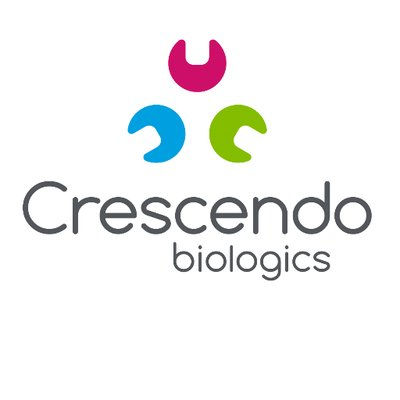预约演示
更新于:2025-05-07
4-1BB x CD40
更新于:2025-05-07
关联
6
项与 4-1BB x CD40 相关的药物作用机制 4-1BB激动剂 [+1] |
在研机构 |
原研机构 |
非在研适应症- |
最高研发阶段临床1/2期 |
首次获批国家/地区- |
首次获批日期1800-01-20 |
作用机制 4-1BB激动剂 [+1] |
在研机构 |
原研机构 |
非在研适应症- |
最高研发阶段临床1期 |
首次获批国家/地区- |
首次获批日期1800-01-20 |
作用机制 4-1BB抑制剂 [+2] |
在研适应症 |
非在研适应症- |
最高研发阶段临床前 |
首次获批国家/地区- |
首次获批日期1800-01-20 |
5
项与 4-1BB x CD40 相关的临床试验NCT06057038
A Phase 1 Study to Evaluate the Safety and Tolerability, Pharmacokinetics, Pharmacodynamics, and Antitumor Activity of GEN1042 Monotherapy and in Combination With Pembrolizumab ± Chemotherapy in Japanese Subjects With Malignant Solid Tumors
This study evaluating GEN1042 will include multiple parts. In this study, GEN1042 alone (phase 1a) or GEN1042 in combination with other anticancer drug(s) (phase 1b) will be evaluated in Japanese participants. The main purpose is to assess the safety and tolerability of GEN1042 monotherapy or GEN1042 in combination in Japanese study participants with cancer.
开始日期2023-11-24 |
申办/合作机构  Genmab A/S Genmab A/S [+1] |
100 项与 4-1BB x CD40 相关的临床结果
登录后查看更多信息
100 项与 4-1BB x CD40 相关的转化医学
登录后查看更多信息
0 项与 4-1BB x CD40 相关的专利(医药)
登录后查看更多信息
152
项与 4-1BB x CD40 相关的文献(医药)2024-07-05·Journal of Proteome Research
Potential Immune-Inflammatory Proteome Biomarkers for Guiding the Treatment of Patients with Primary Acute Angle-Closure Glaucoma Caused by COVID-19
Article
作者: Wang, Jingyi ; Fu, Mingshui ; Gong, Qiaoyun ; Zhao, Shuzhi ; Wang, Haiyan
2024-03-30·Journal of the Science of Food and Agriculture
Mitophagy suppression by miquelianin‐rich lotus leaf extract induces ‘beiging’ of white fat via AMPK /DRP1‐PINK1 /PARKIN signaling axis
Article
作者: Zeng, Maomao ; He, Zhiyong ; Chen, Jie ; Wang, Zhaojun ; Chen, Qiuming ; Christian, Mark ; Wang, Zhenyu ; Yang, Tian
2024-02-20·The Journal of Clinical Endocrinology & Metabolism
Outcomes of Patients With Graves Disease 25 Years After Initiating Antithyroid Drug Therapy
Article
作者: Carlsen, Siri ; Løvås, Kristian ; Cramon, Per Karkov ; Austdal, Marie ; Nedrebø, Bjørn Gunnar ; Hetland, Hanne Brit ; Meling Stokland, Ann-Elin ; Husebye, Eystein Sverre ; Ueland, Grethe Åstrøm ; Watt, Torquil ; Breivik, Lars ; Ueland, Hans Olav
123
项与 4-1BB x CD40 相关的新闻(医药)2025-04-22
·小药说药
-01-引言目前,肿瘤免疫治疗已成为第三代肿瘤治疗中最活跃的研究领域。以PD-1、CTLA-4和PD-L1为靶点的免疫检查点抑制(ICI)疗法在多种癌症的治疗中显示出卓越的效果,并且ICI的免疫疗法随着新的免疫检查点的开发(如TIM-3、LAG-3和TIGIT)而继续扩大。然而,ICI治疗的主要目的是维持先前已建立的抗肿瘤活性。相比之下,刺激性免疫治疗靶点,如CD40、ICOS、CD27、GITR、OX40和4-1BB则用激动剂来激活免疫,主要集中在免疫反应的早期阶段。这些分子最先起作用的很可能是CD40,因为它在抗原呈递过程中起着关键作用,间接地激活T细胞。最新研究显示,CD40激动剂不仅可直接激活树突状细胞(DC)、B细胞等免疫“指挥官”,还能重塑肿瘤微环境(TME),甚至让“冷肿瘤”变得对免疫治疗敏感。CD40激动剂在癌症免疫治疗中正展现出巨大的潜力。-02-一、CD40/CD40L的表达为了获得强大而特异的免疫反应,固有免疫系统和适应性免疫系统需要在多个环节上进行协调。免疫反应的许多关键阶段是由肿瘤坏死因子超家族(TNFSF)的配体及其受体介导的,包括CD40/CD40L。抗原特异性T细胞的有效抗原识别关键取决于特异性抗原呈递细胞(APC)的存在和功能,如B细胞和DC细胞。这些APC通常在细胞表面表达共刺激表面受体CD40(TNFRSF5)。CD40是一种48kda大小的Ⅰ型跨膜蛋白,是连接固有免疫和适应性免疫的重要免疫细胞通讯介质。CD40存在于血小板、B细胞和髓系细胞,但也存在于非造血细胞,如内皮细胞、成纤维细胞、平滑肌细胞甚至某些类型的肿瘤细胞。CD40的同源配体是CD154(TNFSF5/CD40L),一种39kda的II型跨膜蛋白。CD40L的表达通常可诱导并局限于造血系统的细胞,如血小板、粒细胞、活化T细胞、活化B细胞和活化自然杀伤细胞(NK)细胞,但内皮细胞和平滑肌细胞也有弱表达。-03- 二、CD40/CD40L的结构、组成及信号通路TNFRSF信号传导的结构已经比较明确,需要恰当的三维受体聚集和三聚体化。虽然TNFSF配体天然以三价功能单位存在,但受体通常分散分布在细胞表面。TNFSF配体以同源三聚体的形式自然地聚集在细胞表面,其中三个受体结合位点位于相邻单体之间的三个完全相同的缝隙处。关键的是,受体组装成功能性的三聚体复合物是通过天然配体单元的结合发生的。这些三聚体TNFSF配体与在其他细胞表面表达的相应受体的相互作用导致了非常精确的受体聚集。配体对细胞外受体的指令传递给邻近的受体细胞内结构域,然后是细胞内信号复合物的有序组装。TNFSF配体的三聚体结构和由此产生的受体簇是信号传递到细胞的前提。由于这种特殊的要求,一价和二价的结构在体内通常被证明是极低效的。与TNFRSF的其他成员一样,CD40是一种膜结合分子,可以通过细胞间直接接触被膜结合配体激活,也可以被溶液中的可溶性配体激活。多种下游分子和细胞反应进程已被证明受到CD40结合的调节。同源配体连接受体可诱导形成空间上明确的三聚体信号复合物,促进TNF受体相关因子(TRAFs)和NFκB激活剂-1(Act1)的招募。信号复合物的特定组成,主要取决于细胞类型,触发各种途径。例如,与TRAF6的结合主要激活JAK/Stat3通路,TRAF1/2诱导MKK/p38/ERK1/2信号传导,Act1在NFkB通路、JNK和PI3K信号传导中具有多种功能,并与TRAF3一起放大MKK/p38/ERK1/2信号。此外,根据特定的环境,CD40结合可以激活“经典”和非典型的NFkB通路。-04-三、CD40/CD40L的生物学作用CD40在单核细胞及其子代巨噬细胞和DC细胞以及B细胞上的表达在发挥免疫细胞的功能中起着重要作用。单核细胞是固有免疫前体细胞,具有很高的可塑性。它们具有分化为多种细胞类型的能力,如巨噬细胞、髓源性抑制细胞(MDSC)和DC细胞。CD40信号是单核细胞成熟过程的重要触发因素,主要驱动分化为M1谱系的巨噬细胞和DC细胞。CD40与DC细胞表面的结合促进了细胞因子和趋化因子的产生,诱导共刺激分子的表达,并促进抗原的交叉呈递。CD40L的主要功能之一是通过激活DC细胞来增强抗原对T细胞的提呈。这一步称为“许可”,通过上调表面蛋白如CD54和CD86,增加DC与T细胞的相互作用,从而激活后者。B细胞也是CD40L活性的靶点。在胸腺中,T细胞和B细胞之间广泛的串扰使之必须维持表达CD40的B细胞,从而保持自体反应性T细胞对B细胞的阴性选择。B细胞与CD4+T细胞的直接相互作用诱导T细胞表达CD40L,进而保护B细胞不受凋亡的影响。在这个功能中,CD40L通过激活PI3K/Akt提供一个生存信号,使活化的B细胞维持寿命并向浆细胞分化。抗原特异性B细胞通过CD40的稳态增殖和生存机制是通过抗凋亡成员Bcl-2家族的上调来维持的。事实上,CD40/CD40L系统的缺陷与B细胞的抗体类别转换以及细胞超突变的缺陷(hyper-IgM综合征)有关。B细胞与活化的表达CD40L的T细胞的相互作用也增加了MHC-II和CD80或CD86等共刺激分子的表达,并诱导B细胞中的Ig类别转换。活化的B细胞迁移到淋巴器官,在那里向T细胞呈递抗原,CD40激活的DC和B细胞通过释放免疫刺激性细胞因子和趋化因子如IL-6、IL-12p70、IFNγ、CXCL10和TNFα来支持免疫应答。此外,CD40活化的B细胞能够通过促进TNFα和IFNγ等细胞因子的分泌来诱导抗原特异性CD8+T细胞。一些研究证明,体外活化的表达CD40的B细胞是完全功能性抗原提呈的B细胞,随后用这些细胞进行过继细胞转移(ACT)治疗可提高抗肿瘤的疗效。-05-四、CD40/CD40L与肿瘤免疫数十年来,CD40/CD40L信号传导同步免疫反应的固有、细胞和体液分支的非凡能力激发了基础和临床研究的灵感。鉴于CD40的一般表达谱和生物学活性,人们已经做了许多尝试来探索CD40/CD40L信号在抗肿瘤免疫中的作用。CD40激活的DC细胞可用于癌症和传染性疾病(如结核病)的疫苗治疗。CD40信号的另一个有趣结果是表型从“另类活化”的M2型向抗肿瘤或“经典活化”的M1型的转变。这种M1/M2型的命名与肿瘤相关巨噬细胞(TAM)在肿瘤免疫治疗中特别相关。所谓的M1型的“经典活化”巨噬细胞产生于对GM-CSF以及IFNγ和LPS等刺激物的反应,通常被认为具有促炎性免疫反应和抗原交叉呈递的作用。M1型巨噬细胞主要与良好的抗肿瘤免疫反应相关。“另类活化”的M2型巨噬细胞是由于暴露于M-CSF和细胞因子(如IL-4和IL-10)而产生的,并参与组织修复和消除炎症状态。肿瘤相关的M2型被认为是癌症进展和转移的关键驱动因素。肿瘤和浸润性巨噬细胞的紧密相互作用强烈地塑造了肿瘤微环境,从而建立了炎症或促肿瘤的局部条件。有人提出,改善肿瘤内M2/M1谱系的平衡可以通过促进细胞毒性T细胞的浸润和激活来提高抗肿瘤免疫反应。这一点已经在多个模型中进行了描述,例如胰腺癌和小鼠异种移植胶质母细胞瘤模型。巨噬细胞复极化与CD40活化诱导CD206下调和CD54表达增加一致,表明巨噬细胞迁移能力的改变和有效激活。有趣的是,尽管CD40在许多组织中广泛表达,肿瘤细胞似乎更易受膜结合CD40L诱导的CD40杀伤。在B16黑色素瘤小鼠模型中,DC细胞上表达的膜结合CD40L可直接诱导CD40阳性肿瘤细胞凋亡,而非T细胞依赖的的细胞生长抑制活性则源于CD40刺激的IFNγ激活的巨噬细胞。这一现象的部分原因可能不是CD40信号的直接作用,而是对易感细胞类型死亡受体的二次上调。然而,抗CD40抗体Lucatumumab和dacetuzumab对B细胞恶性肿瘤有一定的临床效果,这可能归因于抗体介导的巨噬细胞吞噬和抗体依赖性细胞毒性(ADCC)的作用。结合CD40后,肿瘤细胞显示出DNA损伤的迹象,分泌促血管生成因子,如VEGF和IL-8,并且通常表现出衰老相关分泌表型(SASP)的状态,这是由于CD40诱导的NFκB通路的激活。-06-五、CD40激动剂的药物开发现状基于其独特的受体聚集模式,从TNFRSF产生的下游信号依赖于具有非常精确的结构和三维组成的激动剂化合物。由于CD40在抗肿瘤免疫反应中发挥关键作用,诱导CD40信号的各种策略已经被广泛地研究探索。大致可分为基于激动剂抗体的方法或基于CD40L的方法。目前,临床开发中有9种激动性人抗CD40抗体:4种IgG1抗体(APX005M、mitazalimab、2141-V11、SEA-CD40),2种IgG2抗体(selicrelumab和CDX-1140),1种IgG突变抗体(LVGN7409)和2种双特异性抗体(RO7300490、ABBV-428)。SelicrelumabSelicrelumab(也称为CP-870893,RO7009789)是一种完全人IgG2抗体,不依赖于通过Fc结构域交联来激活CD40。selicrelumab是临床试验中研究最广泛的CD40激动剂。最近,一项1期研究评估了selicrelumab在胰腺导管腺癌(PDAC)患者手术前使用或不使用化疗(nab-紫杉醇和吉西他滨)的新辅助治疗(NCT02588443)。接受selicrelumab单药治疗的患者的1年OS率(中位数+SE)分别为81.8%+11.8%,接受selicreumab联合化疗的患者为100%。Selicrelumab耐受性良好,相关不良事件(AE)大多较轻。此外,发现了selicrelumab诱导TME调节的证据,包括T细胞浸润、DC成熟、巨噬细胞复极化和肿瘤基质密度降低。CDX-1140CDX-140是一种人IgG2单克隆抗体,可驱动NF-kB激活。它结合CD40L结合位点之外的结构域,其激活机制独立于FcR交联。来自评估CDX-1140与抗PD-1治疗(pembrolizumab)联合使用或不使用的I期试验的数据显示,1.5 mg/kg CDX-1140联合200 mg pembrolizumab的剂量具有良好的安全性。观察到临床益处,尤其是在非小细胞肺癌(NSCLC)患者中,有80%的可评估患者具有稳定疾病(SD),而所有患者在之前的基于抗PD-1/L1的治疗中都经历了进展性疾病(PD)(NCT03329950)。APX005MAPX005M是一种人源化IgG1单克隆CD40抗体。通过Fc结构域中的点突变,APX005M增强了与FcγRIIb的结合亲和力,促进了CD40的交联并介导了ADCC。多个早期临床试验评估了APX005M与免疫疗法的联合应用。一项II期研究评估了APX005M与化疗(nab-paclitaxel和吉西他滨)联合使用或不使用抗PD-1(nivolumab)治疗转移性胰腺癌患者的疗效。研究表明,APX005并没有显著改善OS:在105名患者中,nivo/化疗达到了1年总生存期(OS)的主要终点,但APX005M/化疗或APX005M/Cnivo/化学均未达到。然而,APX005M/化疗后的存活率与更显著的肿瘤内CD4+T细胞浸润、循环分化的CD4+T细胞和APCs相关(NCT03214250)。最近,在随后的一项II期研究中,研究了APX005M与纳武单抗联合治疗抗PD-1疾病进展后的转移性黑色素瘤患者。客观反应率(ORR)为15%,中位反应持续时间至少为26个月。MitazalimabMitazalimab(也称为ADC-1013和JNJ-64457107)是一种靶向CD40的人IgG1单克隆抗体。它被设计为以FcγR依赖的方式与CD40结合,具有高效力和亲和力,这有利于肿瘤内给药,以减少剂量和不良免疫相关事件。在一项针对晚期实体瘤患者的I期研究中,静脉注射0.075-2mg/kg的Mitazalimab显示出可控的安全性。 2141-V112141-V11是一种完全人IgG1 CD40抗体,是selicrelumab的Fc优化版本,其中人IgG1 Fc经过5位点突变改造,可增强Fc与FcγRIIB的结合。一项I期研究评估了2141-V11在皮肤转移的实体瘤患者中的作用,在局部和远处病变中显示出抗肿瘤活性的迹象(NCT04059588)。另一项I期研究调查了2141-V11单药治疗对标准治疗无效的非肌肉浸润性癌症(NMIBC)患者的安全性和剂量(NCT05126472)。局部膀胱内给药用于减轻全身毒性。此外,在复发性胶质母细胞瘤患者的I期研究中,通过增强递送(CED)将2141-V11与免疫毒素(D2C7-IT)联合用于肿瘤内给药是安全且有一定疗效的:在入组的5名患者中,一名0.70 mg剂量的患者和两名2.0 mg剂量的患者观察到肿瘤响应的早期迹象。SEA-CD40SEA-CD40是一种全人源的非岩藻糖基化IgG1单克隆CD40抗体。非岩藻糖基化抗体增强了与FcγRIIIa受体的结合,可能提高了激动疗效。一项首次人体I期试验评估了晚期实体瘤和淋巴瘤患者的静脉注射SEA-CD40单一疗法。然而,SEA-CD40的抗肿瘤作用很小,在基底细胞癌患者中有1.8%(1/56)的部分反应,在滤泡性淋巴瘤患者中有1.8%(1/56)的完全反应。另一项研究检查了SEA-CD40联合化疗(nab紫杉醇和吉西他滨)和pembrolizumab治疗转移性PDAC患者的疗效。在10μg/kg和30μg/kg的剂量组中,分别有48%和38%的患者观察到了客观响应。两个剂量组的中位反应持续时间均为5.7个月(NCT02376699)。LVGN7409LVGN7409是一种IgG突变重组单克隆CD40抗体,具有工程Fc片段,可选择性结合FcγRIIB。LVGN7409以FcγRIIB交联依赖的方式激活CD40,因此在富含CD40和FcγRIIB的TME中发挥最佳作用。目前,有两项LVGN7409的I期研究。LVGN7409的第一项人体I期研究是在有或没有抗PD-1抗体(LVGN3616)和/或CD137激动剂抗体(LVGD6051)的情况下评估LVGN7407。静脉注射LVGN7409单药治疗在2 mg/kg以下具有良好的耐受性(NCT04635995)。RO7300490RO7300490是一种针对CD40和成纤维细胞激活蛋白(FAP)的新型双特异性抗体,后者在肿瘤组织中经常过表达,在健康组织中表达较低。因此,RO7300490能够直接重塑TME,同时可能避免与全身CD40激活相关的毒性。目前,一项I期研究正在评估RO7300490在晚期实体瘤患者中使用或不使用atezolizumab的疗效(NCT04857138)。ABBV-428ABBV-428是另一种双特异性抗体,旨在通过与肿瘤抗原间皮素相互作用实现CD40的局部激活。第一项人体I期研究评估了ABBV-428在晚期实体瘤患者中使用或不使用纳武单抗的情况(NCT02955251)。根据接受ABBV-428单药治疗的患者的中期数据,36%的患者在推荐的II期剂量(3.6 mg/kg)下的最佳临床反应为SD。未观察到CD40激动剂的毒性。然而,ABBV-428产生的临床活性很小,这可以用肿瘤细胞上间皮素的低表达来解释,这将限制肿瘤的可及性和ABBV-428对CD40的交联。-07-结语增强抗肿瘤免疫应答的策略是肿瘤学最有希望的新进展之一,而TNFRSF成员,如CD40,是其中重要的靶点。由于产生高效TNF-R-SF信号的独特要求,激动剂分子必须产生非常精确的受体结构和三维结构。虽然已经探索了诱导CD40信号的各种策略,但是20年来有限的临床成功表明需要探索新的方法,这种信号通路激动剂的真正威力尚未在临床开发中充分释放出来。目前CD40激动剂临床疗效有限的原因归咎于抗体的结构和功能特性,包括每个分子只有两个靶结合位点,不适合刺激TNFRSF。由于这一信号通路具有广泛的靶向性,因此也可与其他药物和疗法联合应用。相信不久的将来会产生更多令人鼓舞的临床数据,提高治疗效果,并拓宽更多癌症患者的治疗选择。参考资料:1.Concepts for agonistic targeting of CD40 in immuno-oncology. Hum Vaccin Immunother. 2020;16(2):377-387.2. Harnessing the Potential of CD40 Agonism in Cancer Therapy. Cytokine Growth Factor Rev. 2023 Dec 4;75:40–56公众号内回复“ADC”或扫描下方图片中的二维码免费下载《抗体偶联药物:从基础到临床》的PDF格式电子书!公众号已建立“小药说药专业交流群”微信行业交流群以及读者交流群,扫描下方小编二维码加入,入行业群请主动告知姓名、工作单位和职务。
免疫疗法
2025-03-11
·小药说药
-01-
导读
近年来,肿瘤免疫治疗的突破让“免疫检查点抑制剂”成为公众关注的焦点。但许多人可能不知道,这些抗体药物的疗效不仅取决于其靶向结合能力,还与一个关键结构——Fcγ受体(FcγR)密切相关。
Fc–FcγR相互作用对肿瘤靶向抗体的活性至关重要,如利妥昔单抗、曲妥珠单抗和西妥昔单抗,其中肿瘤细胞的杀伤至少部分是由于这些机制。然而,我们对这些免疫调节抗体的这些相互作用如何增强抗肿瘤免疫的理解仍然知之甚少。因此,进一步了解评估IgG亚类、遗传多态性的影响,以及这些抗体作用机制的临床前和临床研究之间的转化,有助于我们进一步提高这些治疗药物的疗效。
-02-
什么是Fcγ受体?
抗体是免疫球蛋白超家族的成员,在结构上由两个结构域组成:负责抗原识别的结合结构域(Fab)和与Fc受体(FcRs)结合的Fc结构域。Fab包括轻链和重链的互补决定区(CDR),该互补决定区包含六个决定抗原识别的高可变区。Fc区由重链α链、δ链、ε链、γ链或μ链组成,分别存在于IgA、IgD、IgE、IgG和IgM中,定义了抗体同种型。FcRs有三种类型:I型,包括典型的Fcγ受体;II型,其含有C型凝集素受体如CD209和CD23;以及分别负责维持抗体半衰期和降解的细胞内受体新生Fc受体(FcRn)和TRIM-21。
FcγRs是一个结合单体和免疫复合物IgG的受体家族,可引发激活或抑制功能。这些受体参与驱动抗体效应器功能,包括抗体依赖性细胞毒性(ADCC)和/或抗体依赖性胞吞噬作用(ADCP)、抗原呈递以及趋化因子和细胞因子的释放。
在人和小鼠中,有三个受体家族。其中包括FcγRI(CD64)、FcγRII(CD32)和FcγRIII(CD16)。小鼠表达这三种受体,以及独特的高亲和力FcγRIV(CD16-2)。FcγRI、FcγRIII和FcγRIV被认为是激活受体,而FcγRII是抑制性的。
人和小鼠FcγRI、FcγRIII和FcγRIV通过一种含有免疫受体酪氨酸激活基序(ITAM)的衔接蛋白,即Fc受体γ链(FcRγ)发出信号。人FcγRIIa和FcγRIIc是唯一在胞内尾部含有内源性ITAM的FcγRs,不需要衔接蛋白来发出信号。FcγRIIb通过与免疫复合物结合并通过内源性细胞内免疫受体酪氨酸基抑制基序(ITIM)发出信号,抑制通过激活FcγRs介导的抗体效应器功能。
-03-
结构决定命运:FcγR与IgG亚型的选择
FcγRs根据其结合单体或IgG免疫复合物的能力分为高亲和力和低亲和力。亲和力高于107/M-1的FcγRs 可以结合单体和IgG免疫复合物,被认为是高亲和力的;而FcγRs的亲和力低于107/M-1只能与IgG免疫复合物结合,被认为是低亲和力。人hIgG1、hIgG3和hIgG4与所有FcγRs结合,而hIgG2与除FcγRI和FcγRIIIb外的所有FcγRs结合。小鼠mIgG1仅与mFcγRII和mFcγRIII结合,mIgG2a/c和mIgG2b与所有FcγRs结合,而mIgG3仅与mFcγRI结合。但在体内,这些受体的亲和力受到多种变量的影响,如抗体-抗原比率、免疫复合物的大小和受体的位置。
IgG亚类对FcγRs的不同亲和力和每个FcγR的细胞表达水平被用于定义引发“弱”或“强”抗体效应功能的可能性,这被称为激活抑制(A/I)比率。通常,具有hIgG1主链的治疗性抗体用于激活FcγRs并清除靶细胞。相反,hIgG2和hIgG4抗体用于阻断受体-配体相互作用,而不参与激活FcγRs,因为它们对FcγRs的亲和力相对较低。然而,hIgG2和hIgG4仍然具有结合激活的FcγRs的能力,可能在意想不到的情况下驱动效应器功能。由于FcγRIIa和FcγRIIIa主要在NK细胞、粒细胞和巨噬细胞上表达,它们被认为是人类IgG的主要效应细胞。在小鼠中,当需要抗体效应器功能时使用mIgG2a,而当阻断靶的生物活性时使用mIgG1。mIgG2a的治疗性抗体需要与髓系细胞上的高亲和力小鼠FcγRs、mFcγRI和mFcγRIV结合,以清除靶标。
-04-
FcγR的免疫调节作用
1. 调节先天免疫与适应性免疫的桥梁ADCC与ADCP:NK细胞通过FcγRIIIa识别抗体标记的肿瘤细胞,释放穿孔素/颗粒酶直接杀伤靶细胞;巨噬细胞则通过吞噬作用清除肿瘤。
抗原呈递增强:树突状细胞通过FcγR捕获免疫复合物,促进肿瘤抗原交叉呈递,激活T细胞。
2. 免疫检查点的“间接调控者”
耗竭抑制性T细胞:抗CTLA-4抗体(如伊匹木单抗)通过FcγR介导的ADCC清除调节性T细胞(Treg),解除免疫抑制。
协同增效:LAG-3或TIGIT抗体单药效果有限,但与PD-1抗体联用可通过FcγR依赖的机制增强T细胞活化。
-05-
临床药物的精细博弈:Fc工程化策略抗体工程是调节FcγR结合的强大工具,影响治疗性抗体的活性、半衰期和生产制造。Fc的点突变和N297糖基化位点的修饰已被广泛用于修饰IgG与补体、FcRn和FcγRs的结合,以影响其作用机制。最常见的突变之一是用于治疗性hIgG4抗体的S228P突变。另一种常见的策略是对Fc的CH2结构域内连接到N297的聚糖进行糖工程改造。
CTLA-4
美国食品药品监督管理局(FDA)已经批准了两种CTLA-4抗体,ipilimumab(hIgG1)和tremelimumab(hIgG2)。尽管hIgG1具有比hIgG2更高的亲和力,hIgG1和hIgG2都可以参与激活FcγRs,潜在地驱动抗体效应器功能并导致表达CTLA-4的细胞的清除。
PD-1
FDA已经批准了几种靶向PD-1的抗体,这些抗体使用S228P突变改造的hIgG4亚型阻断其与PD-L1的相互作用。令人感兴趣的是,tislelizumab与其他FDA批准的PD-1抗体不同,因为它在其恒定区经过一系列突变改造,以降低FcγR的结合,有可能防止Fc–FcγR相互作用的有害影响。
PD-L1
目前有三种FDA批准的PD-L1抗体,atezolizumab、durvalumab和avelumab,具有不同的FcγR-结合特性。与具有Fc突变hIgG1亚型的atezolizumab和durvalumab不同,avelumab是一种野生型hIgG1,具有完整的FcγR结合。Avelumab已被证明在参与hFcγRIIIa后介导同种异体癌症细胞系的ADCC,类似于其他肿瘤靶向hIgG1抗体。然而,由于Teff细胞和APC也在TME中表达PD-L1,Avelumab也可能清除这些群体,导致次优的抗肿瘤活性。因此,抗PD-L1药物的最终体内活性将取决于PD-L1在不同免疫细胞和不同TME中的分布和表达水平。
LAG-3和TIGIT
FDA最近批准了LAG-3抗体relatlimab(hIgG4S228P)与抗PD-1(nivolumab)联合治疗晚期黑色素瘤。与大多数PD-1抗体类似,relatlimab被开发用于阻断LAG-3的抑制活性,而不引发抗体效应器功能。
Tiragolumab,一种抗TIGIT hIgG1抗体,最近的的结果显示接受Tiragolumab治疗的患者的CD4+和CD8+Teff细胞和NK细胞活化、Treg细胞清除以及伴随的髓系细胞活化。
CD28
Theralizumab(TGN-1412)是第一种在临床上测试的CD28抗体,其设计具有野生型hIgG4亚类(缺乏S228P突变),作为靶向人CD28的超级激动性抗体,独立于TCR。在I期临床试验中,健康志愿者服用theralizumab会导致细胞因子释放综合征(CRS),导致严重的炎症反应和慢性器官衰竭。进一步的体外研究表明,theralizumab的hFcγRIIb超交联增强了CD28聚集,并增加了CD4+Teff细胞的细胞因子产生,至少驱动了其部分毒性,这是临床前研究中未观察到的特征。此外,该抗体具有野生型IgG4,没有S228P突变,这表明它可能在体内进行了Fab臂交换,可能会增加其毒性效应。
ICOS
已经在临床上评估了几种具有hIgG1或hIgG4骨架的ICOS抗体。有人赞成开发具有效应器功能hIgG1的抗ICOS抗体(vopratelimab),以促进ICOS高表达Treg细胞的消耗,以及表达较低水平ICOS的Teff细胞的激活(通过受体交联)。另一种种更为保守,用hIgG4开发抗ICOS抗体(feladilimab),激活ICOS并减少消耗活化的ICOS高表达Teff细胞的机会。然而,这两种抗体都没有产生显著的临床影响。
CD40
在已经进入临床试验的许多CD40抗体中,具有增强的FcγRIIb结合的hIgG1和不需要FcγRIIb的hIgG2抗体可能最有希望引发最佳治疗潜力。然而,尽管做出了努力,但大多数使用CD40抗体的临床试验显示出有限的疗效,并导致了与治疗相关的肝毒性和CRS。
OX40
人OX40抗体已经在临床上使用hIgG1或hIgG2亚型进行了测试。Ivuxolimab(PF-04518600)是唯一的hIgG2,在一项I期试验中作为单一疗法进行了测试,发现它能促进血液中CD8+Teff细胞的克隆扩增,在6%的局部晚期或转移性癌症患者中有部分反应。在同一项研究中,ivuxolimab与4-1BB抗体(utomilumab)联合使用,在少数晚期实体癌患者中显示出一定疗效。hIgG1 OX40抗体也已在早期临床试验中进行了测试。尽管缺乏临床活性,Cudarolimab(IBI101)和tavolimab与CD4+和CD8+Teff细胞的扩增有关,在后者的情况下与TME内的Treg细胞清除有关。
4-1BB
目前,两种4-1BB抗体已在临床上进行了评估,即urelumab(hIgG4)和utomilumab(hIgG2)。与ICOS和OX40类似,这些抗体在临床试验中显示出有限的反应。Urelumab和utomilumab在循环NK细胞、CD4+Teff细胞和CD8+Teff以及树突状细胞上显示出激活标记物的表达增加。然而,由于其相当大的肝毒性,urelumab显示出较差的安全性,而utomilumab具有更可接受的安全性。utomilumab更有利的安全性可能部分与这样一个事实有关,即utomilumab的激动性不如urelumab,并且其hIgG2亚型不与FcγRIIb结合。一种潜在的4-1BB抗体开发策略可能是降低utomilumab或urelumab的Fab亲和力,同时工程化hIgG2亚型以驱动不依赖于FcγRs的4-1BB激动剂。
-06-
结语:精准免疫治疗的新维度Fcγ受体作为抗体效应的“终末执行者”,其复杂调控网络为肿瘤免疫治疗提供了多重干预节点。随着对FcγR生物学和抗体工程的深入研究,未来的免疫治疗将朝着更精准的调控方向发展。从基因多态性到抗体工程,从单药到联合策略,深入理解FcγR生物学将推动更安全、更精准的下一代疗法诞生。
参考文献:1.Fcγ receptors and immunomodulatory antibodies in cancer. Nat Rev Cancer.2024 Jan;24(1):51-71.
公众号内回复“ADC”或扫描下方图片中的二维码免费下载《抗体偶联药物:从基础到临床》的PDF格式电子书!
公众号已建立“小药说药专业交流群”微信行业交流群以及读者交流群,扫描下方小编二维码加入,入行业群请主动告知姓名、工作单位和职务。
免疫疗法
2025-01-30
Roche also reported the removal of a pair of phase 1 candidates managed by its Chugai subsidiary. \n Roche has given two early-phase bispecifics the heave-ho, ending work on a HER2xCD3 prospect and an IL-15 candidate it picked up from Xencor.The drugmaker removed (PDF) the molecules from its phase 1 pipeline as part of its fourth-quarter clearout. The HER2 asset, known as both RG6194 and runimotamab, was in development in breast cancer. Vir Biotechnology recently reported phase 1 data on its rival HER2 bispecific VIR-5818.The IL-15 candidate, efbalropendekin alfa, was designed to drive the expansion and activation of T cells and natural killer cells by fusing IL-15 to its alpha receptor and Xencor’s bispecific Fc domain. Xencor revised the terms of the deal with Roche’s Genentech late in 2023, opting out of a deal to split costs and agreeing to success-related fees that could have totaled $600 million. Roche also included RG7827, a 4-1BBxFAP bispecific antibody, on the list of the candidates removed from its phase 1 pipeline. However, a Roche spokesperson clarified that the action relates to the company’s decision to end work on the CEAxCD3 bispecific candidate cibisatamab.“Following the discontinuation of cibisatamab, the phase 1 dose escalation study evaluating the combination of cibisatamab with FAP-4-1BBL is discontinued. This decision does not affect any potential future research and development of FAP-4-1BBL beyond the combination with cibisatamab,” the Roche spokesperson said.Roche stopped studying cibisatamab in combination with its checkpoint inhibitor Tecentriq in colorectal cancer patients last year but continued to test the asset with its 4-1BBxFAP bispecific. At the time, Teresa Graham, CEO of Roche Pharmaceuticals, said “we\'ve seen encouraging early data that would lead us to believe that further study is necessary or warranted.” Roche has pursued a multifront attack on FAP, studying CD40 and DR5 bispecifics, respectively RG6189 and RG7386, and the immunocytokine RG7461, but dropped those assets over time. The 4-1BB bispecific RG7827, also known as RO7122290, recently completed phase 1/2 trials in urothelial and colorectal cancers.Amgen returned a 4-1BBxFAP bispecific to Molecular Partners almost three years ago, but FAP remains a target of interest for multiple companies. Molecular Partners is still developing the FAPxCD40 bispecific MP0317, Novartis is working (PDF) on radioligand therapies, Genmab has a FAPxDR4 candidate in phase 1 and Avacta Therapeutics is expanding development of its peptide-drug conjugate.Roche also reported the removal of a pair of phase 1 candidates managed by its Chugai subsidiary. One of the assets was a glypican-3xCD3 T cell-redirecting antibody for treatment of solid tumors. The other axed Chugai candidate was SPYK04, a RAF-MEK molecular glue that the Japanese drugmaker removed (PDF) from its pipeline in October.

临床1期引进/卖出多肽偶联药物
分析
对领域进行一次全面的分析。
登录
或

生物医药百科问答
全新生物医药AI Agent 覆盖科研全链路,让突破性发现快人一步
立即开始免费试用!
智慧芽新药情报库是智慧芽专为生命科学人士构建的基于AI的创新药情报平台,助您全方位提升您的研发与决策效率。
立即开始数据试用!
智慧芽新药库数据也通过智慧芽数据服务平台,以API或者数据包形式对外开放,助您更加充分利用智慧芽新药情报信息。
生物序列数据库
生物药研发创新
免费使用
化学结构数据库
小分子化药研发创新
免费使用

